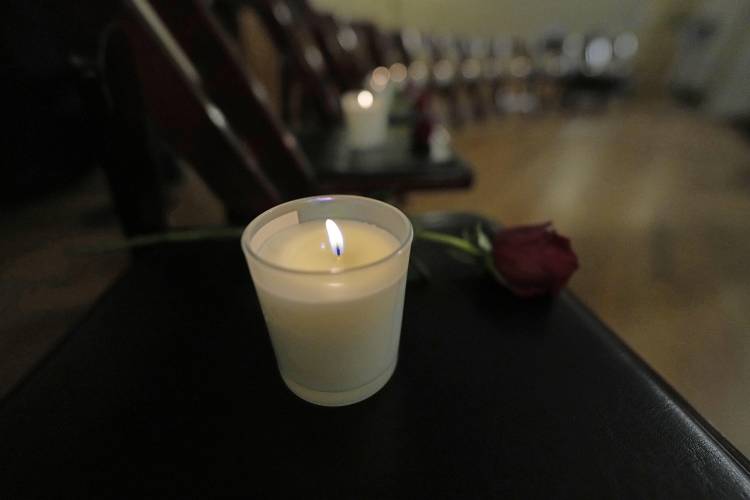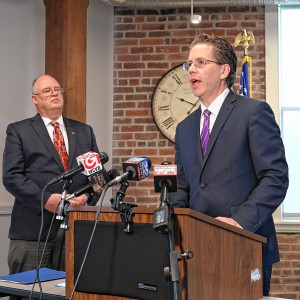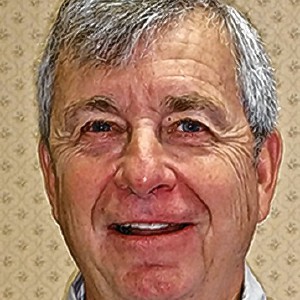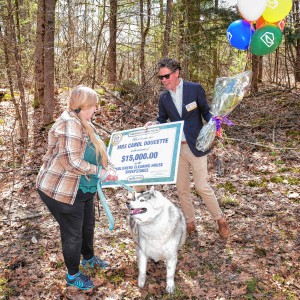My Turn: Still No. 1 in male mass shootings 25 years after Columbine

Thirteen chairs are empty with candles and roses to remember the 25th anniversary of the Columbine High School mass shooting, Friday, April 19, 2024, in Denver. AP PHOTO/JACK DEMPSEY
| Published: 04-23-2024 6:38 PM |
Fortunately, there wasn’t a copycat mass shooting to grotesquely mark the 25th anniversary of the Columbine massacre on April 20, 1999. But just as we can be certain there will be another solar eclipse, it’s only a matter of time before a hail of bullets will block out the sun for another community somewhere in America. What’s also true? Expect the shooter to be male, probably white.
In an effort to prevent mass shooters from attaining posthumous fame, today the news media rarely reveals their names. Back in 1999, after high school seniors Dylan Klebold and Eric Harris murdered 12 classmates and a teacher in Littleton, Colorado, their names were widely broadcast and published.
A quarter-century later, despite substantive actions to prevent mass shootings by a number of states — and, with Vice President Kamala Harris now overseeing the first-ever White House Office of Gun Violence Prevention — we still lead the the world in this particular brand of murder. USA! USA! USA!
As horrific as the April 13 murder of six by an Australian man at a mall outside of Sydney, he was only wielding a knife. I shudder to think of the level of carnage if he had been brandishing an AR-15, the weapon of choice in most mass shootings.
Australia, you might recall, banned automatic and semiautomatic weapons after a mass shooting in Port Arthur, Tasmania on April 28, 1996. There a gunman opened fire in a cafe, slaughtering 35 and wounding 23. Then-prime minister John Howard, a conservative politician in office for just six weeks, was able to push through sweeping gun control legislation 12 days after the shooting.
The legislative package he shepherded through banned selling and importing semiautomatic and automatic rifles, and semiautomatic shotguns, and required gun purchasers to explain the reason — and wait 28 days — before buying a firearm. Most significantly, the Australian law required a mandatory gun buyback. The government confiscated and destroyed nearly 700,000 firearms, cutting in half the number of households that possessed guns.
Prime Minister Howard said at the time, “People used to say to me, ‘You violated my human rights by taking away my gun.’ I’d tell them, ‘I understand that. Will you please understand the argument [that] the greatest human right of all is to live a safe life without fear of random murder?’”
Article continues after...
Yesterday's Most Read Articles
 Orange Selectboard declares armory as surplus property
Orange Selectboard declares armory as surplus property
 DA to announce breakthrough in 1989 unsolved homicide
DA to announce breakthrough in 1989 unsolved homicide
 1989 homicide victim found in Warwick ID’d through genetic testing, but some mysteries remain
1989 homicide victim found in Warwick ID’d through genetic testing, but some mysteries remain
 Sportsman’s Corner: Orange Gun Club’s Kids Derby
Sportsman’s Corner: Orange Gun Club’s Kids Derby
 Carol Doucette of Royalston receives $15,000 from Publishers Clearing House
Carol Doucette of Royalston receives $15,000 from Publishers Clearing House
 Michelle Caruso: Questions candidate’s judgment after 1980s police training incident
Michelle Caruso: Questions candidate’s judgment after 1980s police training incident
Why, in 2024 — a quarter-century after Columbine, 12 years after Sandy Hook, eight years after Orlando, six years after Las Vegas, two years after Uvalde, and six months after Lewiston — is it so hard for U.S. legislators and gun owners to understand that?
In a world where leaders of all stripes use the term “a just war” with a straight face, working to prevent mass shootings feels more within our grasp then say, ending the war in Gaza. What to do first? Change how we talk about the issue. That means refusing to speak out against generic “gun violence.” Until we’re willing to say, men’s gun violence, we’ll continue to miss the mark, falling short of any campaign to prevent mass shootings.
This is not a condemnation of men. The vast majority of men are not mass shooters. For decades, I worked at a men’s center, published a magazine promoting a new definition of manhood, and championed revisiting how we socialize boys, as early as preschool. More and more men are rejecting conventional masculinity.
The weakened, shell-of-itself National Rifle Association coined the oft cited cliché, “Guns don’t kill people. People do” more than a century ago. Variations have long been used to thwart gun control legislation. It’s astonishing how little pushback there’s been.
“People kill people?” Really? Sure, there are rare occasions when women pull the trigger, but as certain as I am that we’ll never hear a news report begin with the words, “A gunwoman opened fire today,” I believe that to minimize mass shootings, we must move the question of the gender of the shooter from the periphery to the center of a long overdue national conversation.
Now is a good time to listen again to entertainers Martin Mull and Steve Martin. They had it right when they penned the satirical sea shanty “Men,” with its one-word chorus: “Men, men, men, men.”
Rob Okun (rob@voicemalemagazine.org, syndicated by Peace Voice, is editor emeritus of Voice Male, a magazine chronicling the profeminist, antisexist men’s movement for more than three decades. He writes about politics and culture.

